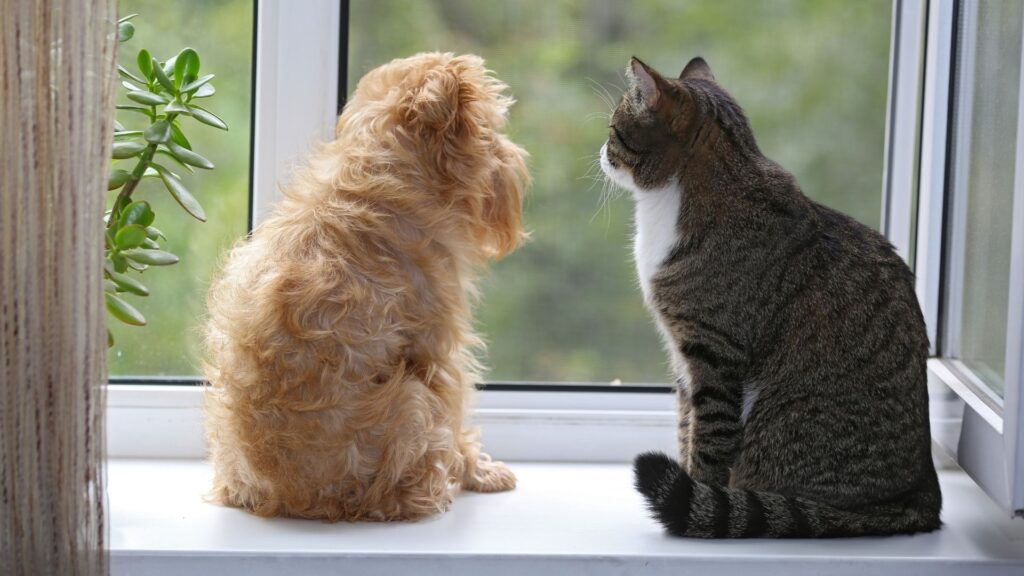
Follow the Trail of Fur and You’ll Find a Friend
We all want lustrous coats for our furry pals, whether they are cats or dogs. Proper grooming and other maintenance are vital for the same reason. For example, matted hair can swiftly go from causing mild skin irritation to infected wounds. Fleas and ticks can dwell relatively undetected in a hair mat, and mats at the hind end can cause an accumulation of feces, which can occasionally obstruct defecation.
A good coat of fur signals vitality and can indicate the health status of a pet. Pets with dry or flaky coats may be suffering from thyroid disease, hyperadrenocorticism (Cushing’s disease), renal or liver disease, or nutritional deficiencies. Severe hair mats can grow so firmly that they impede or cut off blood circulation, necessitating amputation. In fact, one of the primary ways your veterinarian analyzes the health of your dog or cat is by inspecting the state of her coat and skin.
For pets, shedding is a normal part of life. It will be nearly impossible to prevent your pets from shedding, much like it is with human hair. However, there are several potential causes of excessive shedding. In this article, the Sirwiss network of veterinarians and pet groomers share a wealth of information about shedding and what you can do to help your pet.
How Does Your Pet’s Skin and Coat Affect His/her Health?
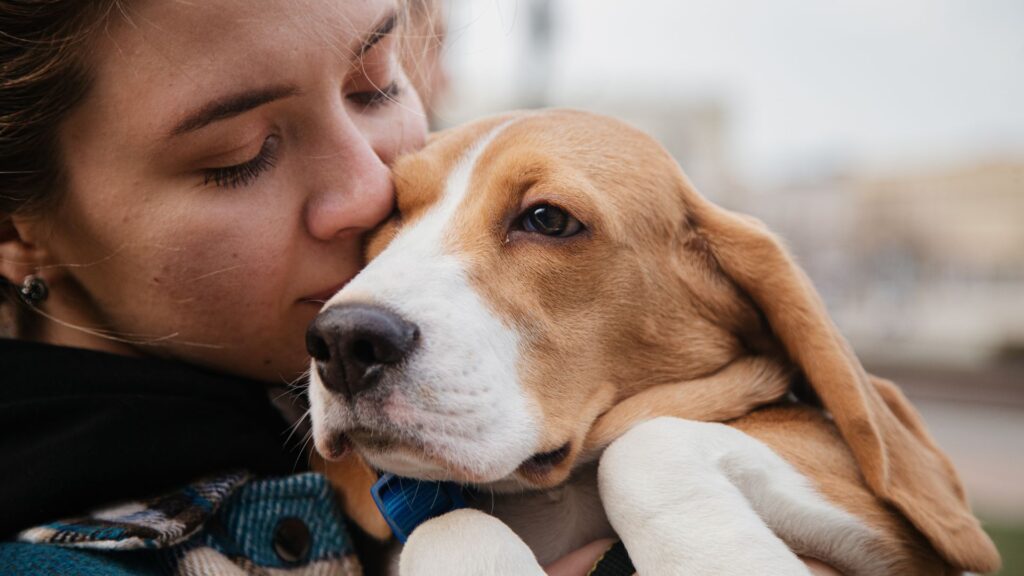
Your pet’s skin and coat aren’t just for show; they perform crucial roles in their health, including protecting their immune system and regulating their body temperature and moisture levels.
The skin and coat serve several primary purposes, including:
- Protection. The skin and coat protect dogs and cats from toxins, environmental stressors, and external objects. The skin and coat shield the internal organs. Nerves and nerve endings in the skin help pets feel heat, cold, pressure, and pain. The coat protects pets from chemical damage, stress, UV light, and hot surfaces.
- Immunity. The skin also functions as an important part of the immune system. If the skin’s immunity is compromised, infections and potentially serious diseases caused by harmful bacteria could occur.
- Thermoregulation. A pet’s body temperature is maintained with the help of an insulating layer of fur provided by a healthy coat. By repositioning hair follicles to draw hair closer together to insulate or outward to enable air to enter under loose hairs to cool a dog or cat, a healthy coat may effectively regulate body temperature. Shivering is a natural way for a pet to generate heat.
- Hydration. You may not realize it, but your pet’s skin is critical in maintaining proper hydration. Water loss through the skin can severely impact your pet’s health. Dogs and cats do not have sweat glands, so excess water loss through unhealthy skin (transepidermal water loss) often causes health problems. Excessive water loss through the skin also affects the amount of energy a pet needs to maintain his metabolism.
- Nutrient storage. The skin stores nutrients. Collagen, enzymes, and protein are in the skin. Protein dominates dog and cat hair. 35% of a dog’s protein goes to skin and coat maintenance. The phospholipid bilayer stores linoleic acid and other fatty acids to give skin elasticity and fluidity. Fatty acids prevent pet inflammation. UV radiation from sunshine convert skin precursors to vitamin D. Zinc, copper, selenium, and manganese are found in high concentrations in the skin as cofactors and coenzymes in various biological reactions. Skin can retain fat-soluble vitamins A and E. Vitamin A produces and maintains cells, and vitamin E protects the skin as an antioxidant. Water-soluble B vitamins are found in the skin but not preserved there.
How to Stop a Dog from Shedding

The first step is to figure out if your dog’s hair loss is normal or if there’s something wrong with them that’s causing them to shed more than usual. Here are some things to keep an eye out for, as well as some suggestions for minimizing your dog’s shedding.
1. Breed-Related Shedding
Some breeds shed all year, such as Boxers and most short-coated dogs, while others, such as Huskies and Akitas, shed most of their hair twice a year. Many people believe that long-coated dogs shed more, however, this is not always the case. When the weather changes, most long-coated dogs shed. Once you know how much your dog sheds on a regular basis, you can keep an eye out for changes. Are they shedding more or less, or at different periods than usual? If your dog is shedding more than usual, there could be an underlying health problem.
2. Shedding Due to Health Issues
If you see an increase in shedding, be worried, especially if it is accompanied by:
- Itchiness
- Patchy hair loss
- Skin lesions
- Signs of generalized illness
If you see these signs, your dog needs to see a veterinarian for diagnosis and treatment.
How to Reduce Shedding
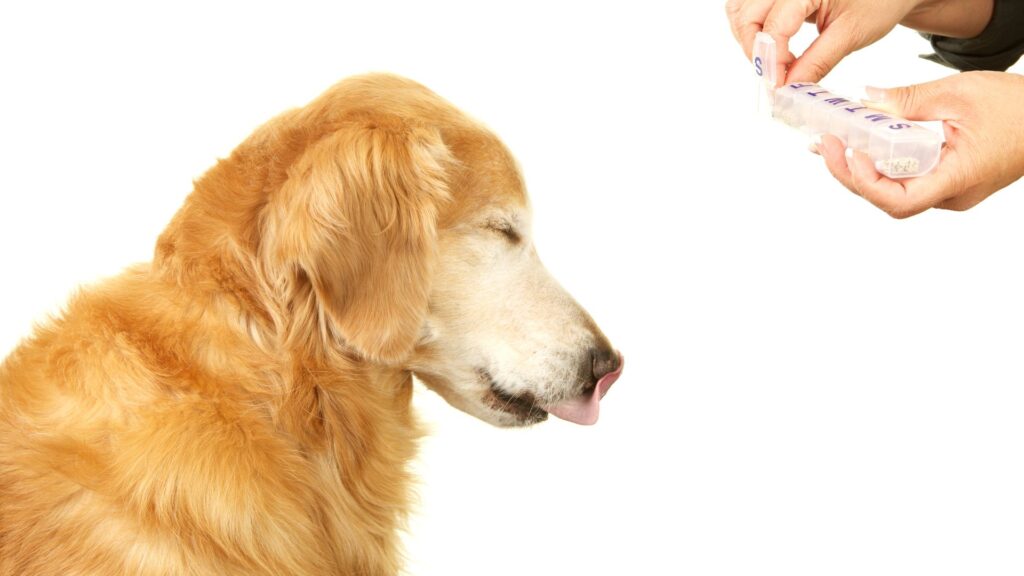
If you’ve decided that your dog is healthy but simply sheds excessively, then use these strategies to assist minimize shedding.
1. Control Dog Shedding with Diet
Whether your dog sheds a thin layer of fur or clumps of fur the size of small mammals, you can take some steps to minimize the problem. Once underlying health issues have been cleared out, a balanced and healthy diet can do a lot to maintain a satisfactory level of shedding. A pet’s poor diet will not provide enough of the necessary nutrients for the growth and maintenance of a healthy coat. Excessive shedding can be mitigated by getting enough high-quality protein and fat, especially vital fatty acids. The amount of shedding and the condition of the coat are both significantly affected by the quality of the food your pet consumes.
2. Minimize Shedding with Grooming
The ideal person to consult about grooming your dog in order to reduce hair loss is a professional dog groomer. In an ideal world, I would advise brushing your dog every day. It’s a great way to bond with your dog while also benefiting their coat and skin. Ideally, you should brush your dog once or twice weekly to minimize shedding.
3. The Best Grooming Tools for Shedding
To control your dog’s shedding, you need only a few fundamental (and cheap) items. Very short-haired dogs like Dobermans and Dalmatians benefit from being groomed using a slicker brush and metal comb, as well as a hand-mitt.
When to See a Professional Groomer
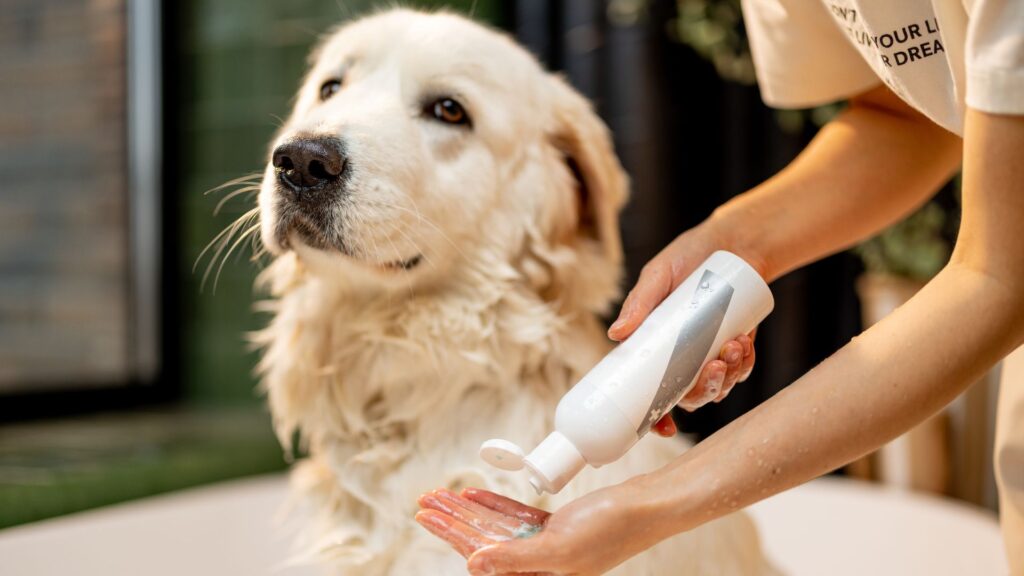
Sometimes it’s best to have a professional do the grooming. To minimize shedding and clean up at home, taking your dog to the groomer once every four to six weeks is recommended. Groomers have the right equipment and can use specific shampoos designed for dogs that shed.
Bathing your dog at home is great fun, but it can lead to skin problems if the shampoo isn’t right, you don’t dry the dog thoroughly, or both. In addition, a dog’s pH balance is different from that of a human’s, so only dog shampoos should be used. However, in between visits to the groomer, you should still brush your dog several times every week.
How to Reduce Cat Shedding
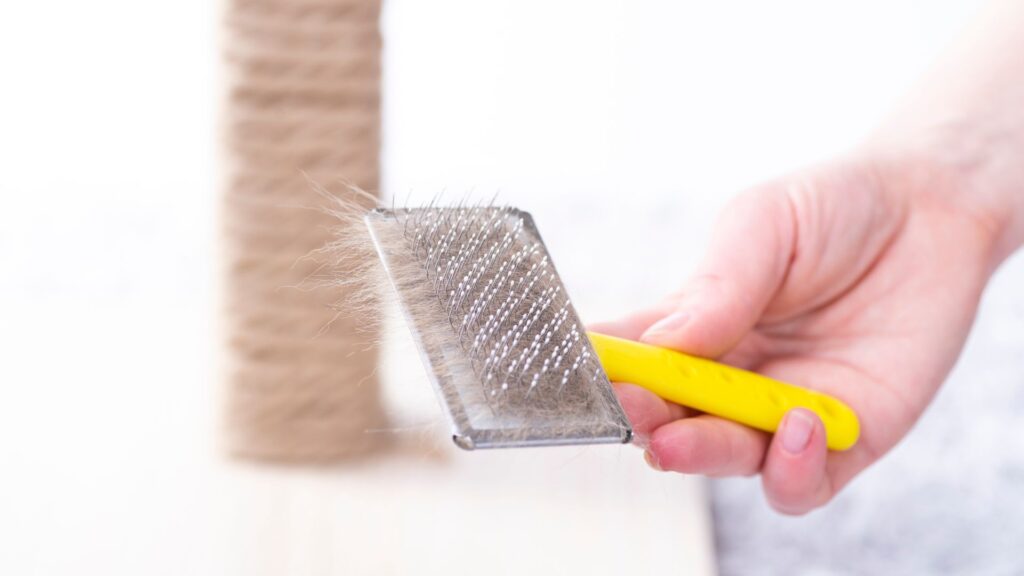
It’s impossible to completely prevent your cat from shedding, and long-haired cats usually shed more than short-haired cats. However, there are a few options that could make dealing with cat fur easier.
1. Brush Your Cat Regularly

If you brush your cat frequently, you can prevent the shedding hairs from ending up on your furniture. However, this has additional benefits beyond reducing the amount of hair you find around the house. It has the potential to prevent them from vomiting hairballs after grooming.
It also keeps the skin and coat from becoming overrun with dead cells, yeast, and germs. Of course, not all felines enjoy (or even tolerate) being brushed, therefore it’s ideal to start the practice as soon in the cat’s life as possible. Brushing an adult cat that resists handling can be done successfully with a gradual approach, lots of treats, and positive reinforcement. If you don’t have the time to devote to your cat’s required quantity of brushing, you can schedule regular appointments at the groomer.
2. Take Them for a Vet Check
Cats naturally lose fur, and during seasonal transitions, this process may accelerate. But let’s say you see a significant shift in how much fur your cat is shedding. In that situation, a trip to the vet is in order. If you see bald or thinning areas on their fur, this is extremely crucial. Your veterinarian can help determine the source of your pet’s hair loss by ruling out common causes such stress, skin allergies, and excessive grooming.
3. Check Their Diet
Your cat or kitten’s skin and fur will benefit greatly from a healthy, well-balanced diet. Cats need high-quality protein, as well as supplies of important fatty acids, vitamins, and minerals, to maintain a shiny and healthy coat. A thin, low-quality coat and possible shedding are the results of a bad diet. Therefore, you should give your cat high-quality food that meets all of its nutritional needs.
4. If You’re Extra Brave…Consider A Bath
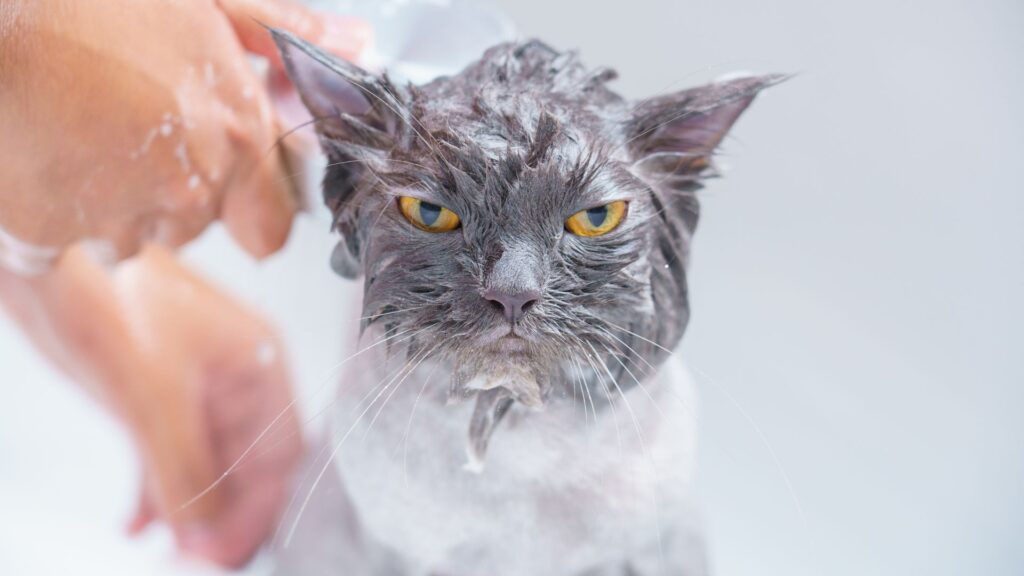
Dead, dying, or loose hair, as well as the excess dander hidden in your cat’s coat, can all be washed away by running water. However, it is important to use a shampoo designed for cats, as this will help keep your cat’s skin healthy and hydrated. Due to the difficulty most cats have with water, you should schedule your cat’s baths for the spring and fall, when they are most likely to shed.
5. Improve Their Hydration
If you want your cat to be healthy inside and out, you should make sure it is hydrated. However, it’s not as simple as it sounds to keep your cat hydrated. Cats’ history of living in arid climates may explain why they tend to drink so little water. How then can you ensure that your feline friend is well hydrated? Adding wet food to your cat’s diet is a simple solution. It’s advised that you feed your cat wet food, which contains between 3.85 and 4.4 ounces of water per can (on average, 5.5 ounces). Water drinking fountains and wet food are both good ways to increase your cat’s water intake. There goes half of their water supply for the day.
6. Add Supplements to the Daily Schedule
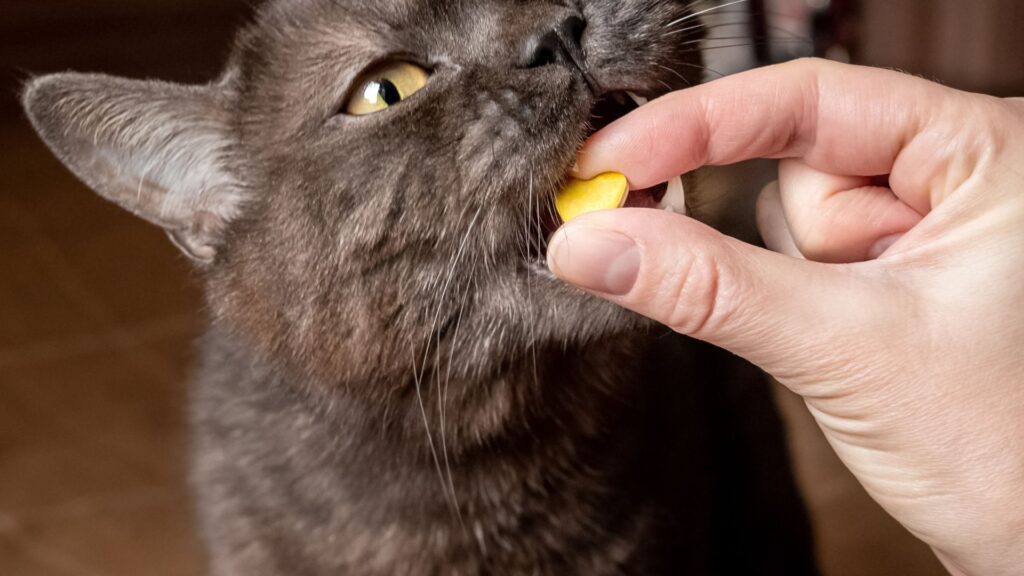
Supplements may help your cat shed less and have a better-quality coat, even if the food they’re eating meets all their nutritional needs. Fish oils, cod liver oil, and evening primrose oil are just some of the dietary supplements you can discuss with your vet. Omega-3 fatty acid, fatty acid, and vitamin E are all included in several skin supplements that work together. Your cat will shed less frequently if his or her skin and fur are in good condition.
Having a heavy-shedding breed of pet might make cleaning up their fur a full-time chore. But if you’re trying to take a break from the fur at home, the aforementioned suggestions may help.